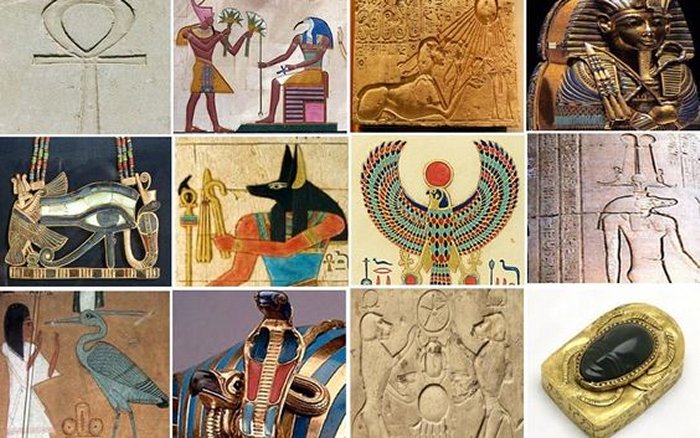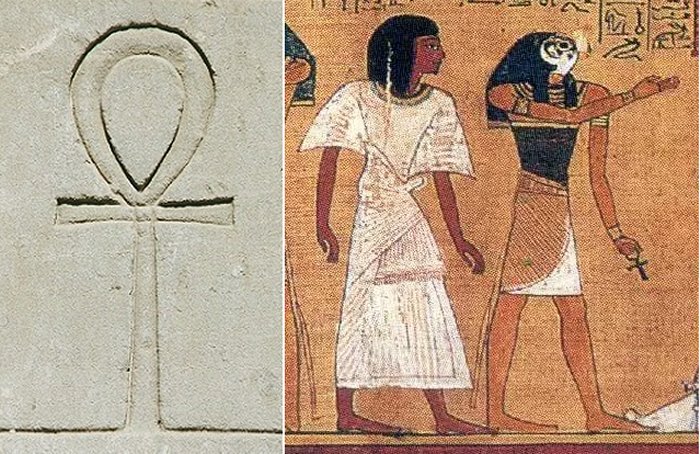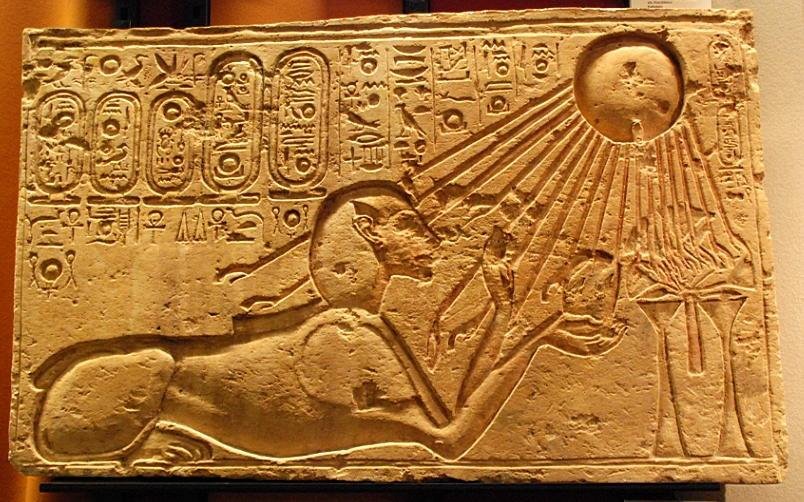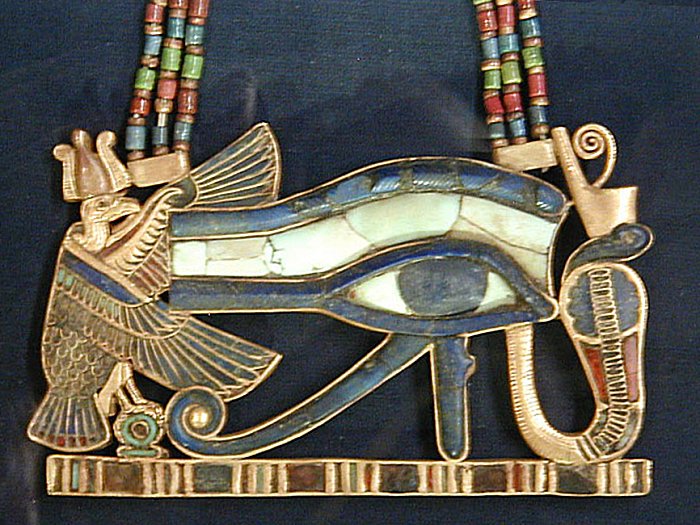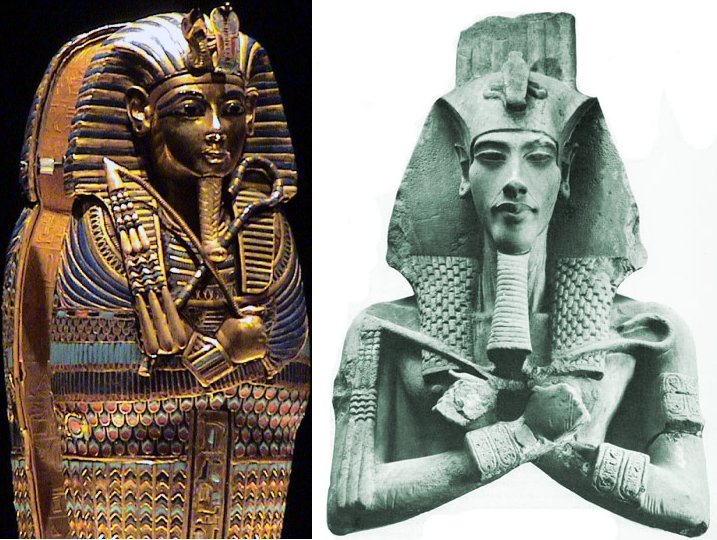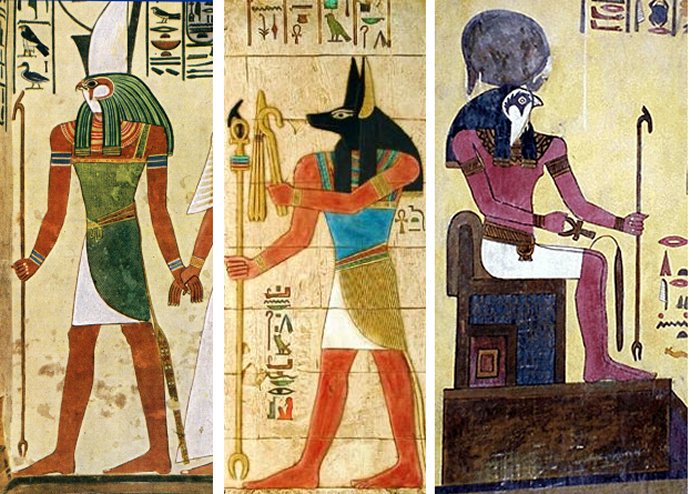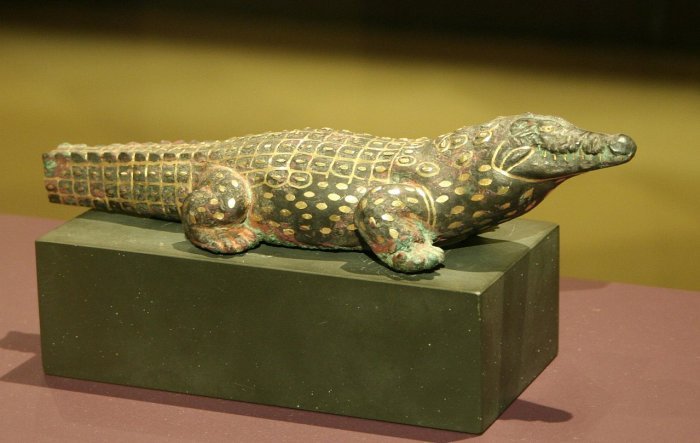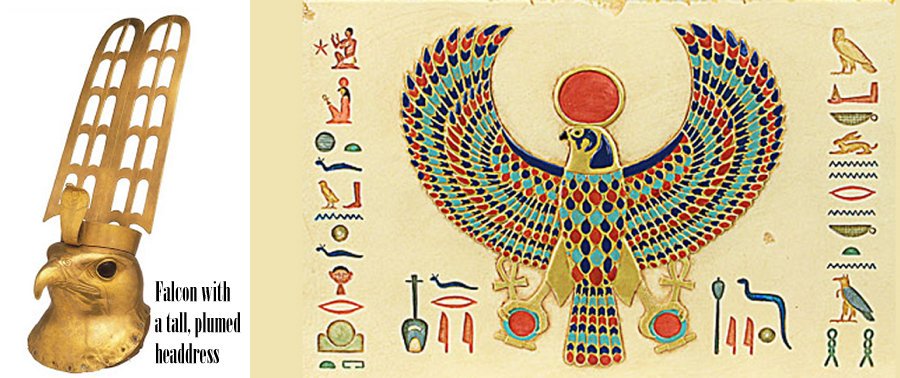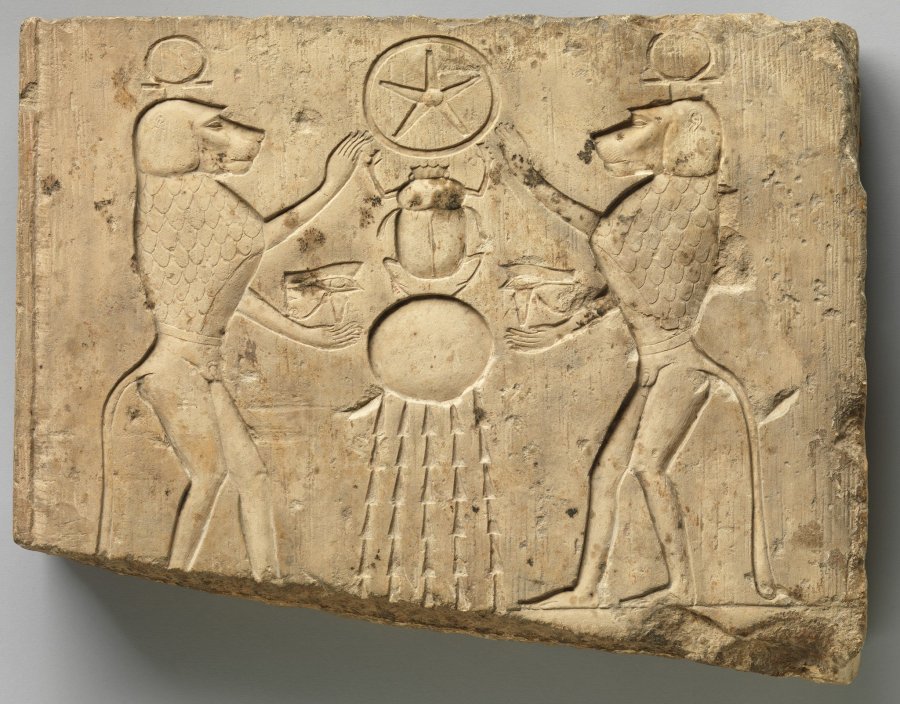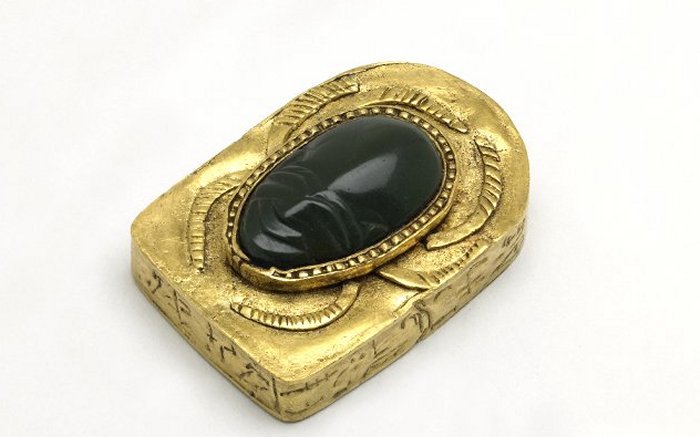12 Ancient Egyptian Symbols Explained
A. Sutherland - AncientPages.com - Symbols played an important role in ancient Egypt. Ancient Egyptian religion had many gods and symbols, some of which were only associated with the king or queen. Many of them represented gods.
1. Ankh
The ankh provided the key to the gates of death and what lay beyond. Credit: Public Domain
The ankh was the sign of life, indicating the power to give or take away life, and could not be carried by ordinary Egyptians.
The original meaning of the "ankh" is still under debate. It has been suggested it was a sandal strap or a magic knot. The hieroglyphic sign of ankh means "life" and symbolizes divine, eternal existence. Being the attribute of the gods, the ankh is handed to the king and, when held to the nose of a dead pharaoh, ensures his everlasting existence. The Egyptians believed that the Afterlife was as meaningful as the present one, and the ankh provided the key to the gates of death and what lay beyond.
As a symbol of imperishable vital force, the ankh was used on temple walls, stelae, in friezes of objects, especially near the feet. It is a sacred emblem symbolizing regeneration or enduring life. Read more about the Ankh
2. The Sphinx
A statue with the body of a lion and the head of a human or animal, the sphinx represents a form of the sun god. Here we see Pharaoh Akhenaten as a Sphinx. Credit: Hans Ollermann - CC BY 2.0
The sphinx – which exists in slightly varying forms - was one of the most important symbols in Egypt. It was depicted with the body of a lion and the head of a pharaoh.
The sphinx was a beast of the sun god, stressing the king’s role as the son of Ra. It generally has the head of a woman and the body of a lion, although the most famous of the sphinxes, the Egyptian ones, do not have wings, unlike those depicted in the Assyrian and Greek versions.
The sphinx, as a symbol of hidden secrets and mystery, has endured for centuries. The Egyptian sphinx was viewed as benevolent, a guardian, while the Greek sphinx was malevolent towards people. The sphinx means royal power.
3. Lotus
Left: Egyptian woman named Mesu smelling a lotus. Credit: Met Museum - Right: Tomb painting of Nebseni depicting how the deceased inhales the scent of the lotus. Credit: Public Domain
The lotus flower flourishes on the banks of the Nile. It opens its large petals with the rising of the sun. To the ancient Egyptians, it represented the sun because it banished the darkness. The blue lotus was the sacred flower of Hathor, the cow goddess of magic, fertility, and healing, representing her powers of healing and regeneration.
This symbol also means creation and rebirth. Nefertum was the god of healing, medicine, and beauty and was strongly associated with the lotus. He is often depicted in Egyptian art with a large lotus blossom forming his crown. The lotus was the only flowering plant in Egypt that bloomed nonstop throughout the year. Held by gods and goddesses near the nose of royal kings, queens, and pharaohs as its scent, this flower was believed to be restorative and protective.
The Egyptian Lotus is considered a symbol of Upper Egypt but is also associated with Heliopolis in Lower Egypt. It was also closely related to funeral ceremonies and the cult of Osiris.
Depictions of the Four Sons of Horus frequently displayed them standing on a lotus before Osiris.
4. Eye
A Wedjat/Udjat 'Eye of Horus' pendant. Credit: Jon Bodsworth, Wikipedia
It was one of the most important symbols in ancient Egypt. It is often seen as an amulet in the form of "wedjat-eye".
In the Pyramid Texts two “evil eyes” are mentioned, which seal the door-catch. It was believed that the sun and the moon were the eyes of the god Horus, of whom it was written that “when he opens his eyes he fills the universe with light and when he shuts them darkness appears”. The name “Osiris” means “place of the eye,” and until the 18th Dynasty, the left-hand side of a coffin was decorated with a pair of eyes so the deceased could see his way through heaven.
At the end of the New Kingdom, the eye was also depicted on mummies in the area of the breast or feet, meaning the eyes of Horus, which were offered to the deceased.
Protective eye amulets were worn by both the living and the dead; the eye represented a unified Egypt and action, anger, or protection. The eye was associated with the barque: “your right eye is the evening barque; your left eye is the morning barque”. Read more about the Eye of Horus and Eye of Ra
5. Crook And Flail
Left: The crook and flail on the coffinite of Tutankhamun. Credit: Wikipedia - CC BY-SA 2.5 ; Right: Pharaoh Akhenaten with crook and flail.
As the symbols of divine authority and kingship, the Crook and Flail were carried by Egyptian Pharaohs in important state ceremonies like coronations of the pharaohs. From the beginning, as emblems of crops and livestock, they belonged to a minor agricultural deity, Anedijti, but were later adopted by followers of the god Osiris and became emblems for moon gods (Khonsu), Anubis, and Harpocrates, the ancient Greek god of silence.
The crook (Heqa-sceptre) was originally a long staff curved at one end, used by herdsmen. The crook was shaped like a ‘shepherd’ of the people and symbolized government, while the flail held by the Pharaoh symbolized the role of a provider of food for the people.
The crook was a scepter also carried by gods and high officials. Later, these divine attributes became symbols of divine guidance and purification.
6. 'Was'-Sceptre
The long staff, called a 'was' sceptre was depicted with many Egyptian gods and goddesses and priests. Image compilation by Ancient Pages
The long staff, called a 'was' sceptre was depicted with many Egyptian gods and goddesses and was believed to have magical powers, symbolizing divine power.
The symbol - an emblem of authority - often appeared in relics, hieroglyphics, and art associated with the ancient Egyptian religion. It was decorated with a stylized animal head at the top of a long, straight staff with a forked end. The 'Was' symbolized power and was associated with the gods - Seth or Anubis - and with the pharaoh.
It was also depicted as being carried by priests. In a funerary context, the sceptre was responsible for the well-being of the deceased and was thus sometimes included in the tomb equipment or in the decoration of the tomb or coffin.
7. The Crocodile
Statue of the crocodile god Sobek in fully animal form, possibly a cult image from a temple. 12th Dynasty. Einsamer Schütze - CC BY-SA 3.0
In ancient Egypt, there were several crocodile cult centers and also a large crocodile necropolis.
The strength of the crocodile was a subject of fascination and also awe. Sobek was the Egyptian crocodile god of strength and power. He was also and patron of the Egyptian army and royal warriors. His crocodile head was used as a recognition aid and a device to visually convey the powers, identity, and attributes of the god. Sobek had titles such as "The Rager", "Lord of the Waters" and "Lord of Faiyum". Sobek was a 2,500-year-old crocodile worshipped in life by the ancient Egyptians and mummified with all due reverence after death.
The ancient Egyptians worshipped this crocodile as the embodiment of Sobek, the crocodile god, and many were mummified after their deaths.
During the great festival of Horus, there was a custom to destroy two cursed clay figurines of crocodiles. In the underworld, the deceased were often threatened by a crocodile. Read more about Sobek
8. The Falcon
As the embodiment of Horus, the falcon wears a double crown. When the falcon represents the Egyptian god Ra, he wears a disk on his head. Image compilation by Ancient Pages
Egyptians associated the falcon with the Eye of Horus and the god Ra, who was most commonly represented as a falcon. The falcon was an important symbol of divine kingship.
In the Pyramid Age, the falcon depiction was frequent in the written language. The falcon was the king of the air and the sacred animal of Horus, the king of the gods and lord of the sky. Horus was believed to appear in the form of a "falcon-headed god." He could see all because one eye was the sun and the other was the moon.
As the embodiment of Horus, the falcon wears a double crown. When the falcon represents the Egyptian god Ra, he wears a disk on his head. A falcon with a human head symbolizes the human soul. Other falcon gods are Month, the god of war with a crown of tall double plumes, the mortuary god Sokar and the sun god Ra.
9. Uraeus
According to the Story of Re, the first uraeus was created by the goddess Isis who formed it from the dust of the earth and the spittle of the sun-god. The uraeus was the instrument with which Isis gained the throne of Egypt for her husband Osiris. Image compilation by Ancient pages.com
The uraeus was the serpent, which the king wore on a diadem or, during the Middle Kingdom, on his crown. The Uraeus, which conveyed legitimacy to the ruler. was represented by a rearing cobra with an inflated hood.
As worn on the head, the uraeus dates back to the forelock worn by the tribes in ancient Libya. The uraeus was the protector of the pharaoh and was believed to spit fire at enemies from its place on the forehead. The Uraeus was used as a symbol of royalty, sovereignty, deity, and divine authority. It was the personification of the goddess Wadjet, the protective goddess of Lower Egypt and one of the earliest Egyptian deities, often depicted as a cobra.
In myths, the snake had many associations, for example, as the Eye of Ra, the Eye of Horus, and the crown of Lower Egypt. The uraeus was also associated with Hathor, Bastet, Sakhmet, Tefnut, and sometimes Nekhbet of Upper Egypt (the vulture goddess), who was depicted as a cobra.
10. Bennu Bird
‘Benu’-bird (the Phoenix). Inerkhau (“Onuris appears” – Onuris was a Greek inflection of the name of the god Iny-Hor) who was the son of Hay and his wife was named Wabet. – here: worshipping the Benu-bird, the sacred phoenix wearing the Atef-Crown. Bennu bird – a symbol of resurrection.
Bennu (Egyptian word for: Phoenix) is an ancient Egyptian deity linked with the sun, creation,
and rebirth. It may have been the inspiration for the phoenix in Greek mythology.
According to Egyptian mythology, the Bennu was a self-created being. This being played a role in
the creation of the world. It was said to be the ba of Ra and enabled the creative actions of Atum.
According to Egyptian mythology, the Bennu was a self-created being.
The Egyptian meaning of the Bennu is ‘palm tree‘ and also ‘purple heron.’ This bird is clearly associated with the Phoenix, and its legend is associated with the Bennu. The Bennu bird has red and golden plumage and is the sacred bird of Heliopolis, one of the oldest cities of ancient Egypt. Sacred Bennu has also been interpreted as the reincarnation of the Gods Ra and Osiris. Heliopolis is referred to as the City of the Sun and is known as one of the oldest Egyptian cities. It was believed the Bennu created itself from a fire that burned upon a holy tree in the temple of Ra and yet others believed that it exploded from the heart of Orisis.
Some of the Bennu bird's titles were “He Who Came Into Being by Himself” and “Lord of Jubilees;” the latter epithet referred to the belief that the Bennu periodically renewed itself like the sun. Its name is related to the Egyptian verb wbn, meaning “to rise in brilliance” or “to shine.”
The Pyramid Texts refer to the yellow wagtail as a symbol of Atum, which may have been the original form of the Bennu bird. New Kingdom artwork shows the Bennu as a grey heron with a long beak and a two-feathered crest, sometimes perched on a benben stone (representing Ra) or in a willow tree (representing Osiris). Because of its connection with Osiris, it sometimes wears the Atef crown. Read more about the Bennu Bird
11. Baboon
The baboon was sacred and often considered a solar animal by the ancient Egyptians. Credit: Metropolitan Museum.
The baboon - believed to be a solar animal by the ancient Egyptians - was admired for its intelligence and held several positions in Egyptian mythology. The baboon god Baba was worshiped in pre-Dynastic times of Egypt, and the animal name 'baboon' could originate from this god's name.
By the time of the Old Kingdom, the baboon was closely associated with Thoth, the god of wisdom, science, and measurement. The baboon was Thoth's sacred animal, often depicted with scribes during their work. As Thoth was a god of the moon, his baboons were often shown wearing the crescent
moon on their head. Baboons carried out Thoth's duties as the god of measurement when they were portrayed at the spout of water clocks and on the scales that weighed the heart of the deceased in the judgment of the dead.
The baboon had also several other funerary roles, for example, in the "Book of the Dead", four baboons were described as sitting at the corners of a pool of fire in the Afterlife.
One of the Four Sons of Horus, Hapy, had the head of a baboon and guarded the lungs of the deceased. Baboons were often portrayed in art with their arms raised in worship of the sun. They were also
shown holding the Udjat, a solar symbol, or shown riding in the day boat of the sun god Ra.
Baboons were usually depicted with their arms raised in worship of the sun and are connected to Divine Consciousness.
12. Scarab
Green jasper human-headed heart-scarab of Sobekemsaf II set in gold mount bearing incised Hieroglyphic text. Image credit: The Trustees of the British Museum
The sacred beetle was an image of self-creation since the Egyptians believed that the beetle came into being from a ball of dung, which, in fact, only served to protect the eggs and larva. The Egyptians associated the scarab with the god Khepri (“he who came forth from the earth”), who they believed rolled the sun across the sky daily.
He was much earlier than the creator god Atum and was regarded as a form of the sun god. The scarab was a popular amulet (as early as the Old Kingdom), placed with the deceased in the tomb and symbolizing a new life.
From the Middle Kingdom on, scarab amulets were carved with text with the name of a king, or from the "Book of the Dead") and placed between the mummy bandages, calling on the heart not to testify against its owner. Pharaoh Amenhotep III of the 18th Dynasty had a collection of scarabs made with texts recording important events. Read more about ancient secrets of the scarab
Updated on March 24, 2024
Written by – A. Sutherland AncientPages.com Staff Writer
Copyright © AncientPages.com All rights reserved. This material may not be published, broadcast, rewritten or redistributed in whole or part without the express written permission of AncientPages.com
More From Ancient Pages
-
 Ten Ancient Jugs May Reveal The Location Of The Biblical Tabernacle
Archaeology | Jul 21, 2017
Ten Ancient Jugs May Reveal The Location Of The Biblical Tabernacle
Archaeology | Jul 21, 2017 -
 On This Day In History: Coverdale Bible Printed In English For The First Time – On Oct 4, 1535
News | Oct 4, 2016
On This Day In History: Coverdale Bible Printed In English For The First Time – On Oct 4, 1535
News | Oct 4, 2016 -
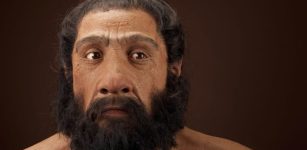 Study Of Ancient Skulls Sheds Light On Human Interbreeding With Neandertals
Archaeology | Aug 23, 2022
Study Of Ancient Skulls Sheds Light On Human Interbreeding With Neandertals
Archaeology | Aug 23, 2022 -
 Our Understanding Of Human Prehistory And Societies Is Wrong – Scientists Say
Featured Stories | Nov 3, 2022
Our Understanding Of Human Prehistory And Societies Is Wrong – Scientists Say
Featured Stories | Nov 3, 2022 -
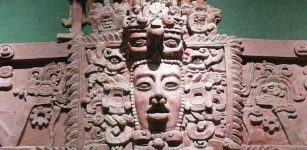 Ancient Maya Lessons On Surviving Drought – Examined By Scientists
Archaeology | Jan 5, 2022
Ancient Maya Lessons On Surviving Drought – Examined By Scientists
Archaeology | Jan 5, 2022 -
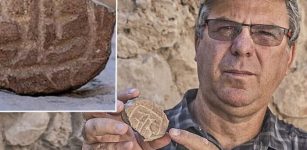 A Seal Impression Dated To Persian Period Discovered In The City Of David
Archaeology | Jul 3, 2020
A Seal Impression Dated To Persian Period Discovered In The City Of David
Archaeology | Jul 3, 2020 -
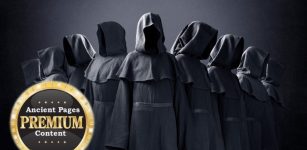 Ancient Secrets Of The Nine Unknown Men: Guardians Of Forbidden Knowledge Hidden From Humanity
Featured Stories | Aug 28, 2014
Ancient Secrets Of The Nine Unknown Men: Guardians Of Forbidden Knowledge Hidden From Humanity
Featured Stories | Aug 28, 2014 -
 Enigmatic Newport Tower – Built By The Vikings, Knights Templar, Freemasons Or Someone Else?
Featured Stories | Aug 1, 2024
Enigmatic Newport Tower – Built By The Vikings, Knights Templar, Freemasons Or Someone Else?
Featured Stories | Aug 1, 2024 -
 An Expert Explains Why Tutankhamun’s Tomb Remains One Of The Greatest Archaeological Discoveries
Archaeology | Nov 2, 2022
An Expert Explains Why Tutankhamun’s Tomb Remains One Of The Greatest Archaeological Discoveries
Archaeology | Nov 2, 2022 -
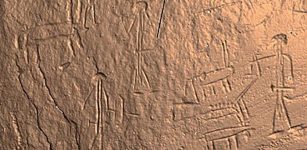 Ancient Rock Engravings Unveil Intriguing Insights Into Human Cultures
Archaeology | Jul 4, 2023
Ancient Rock Engravings Unveil Intriguing Insights Into Human Cultures
Archaeology | Jul 4, 2023 -
 Bes: Egypt’s Intriguing Dwarf God Of Music, Warfare And Protector Against Snakes, Misfortune And Evil Spirits
Egyptian Mythology | Jul 31, 2016
Bes: Egypt’s Intriguing Dwarf God Of Music, Warfare And Protector Against Snakes, Misfortune And Evil Spirits
Egyptian Mythology | Jul 31, 2016 -
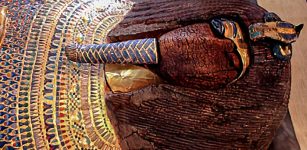 Dispute And Mystery: Strange Case Of The Tomb KV55 In The Valley Of Kings, Egypt
Civilizations | Oct 8, 2015
Dispute And Mystery: Strange Case Of The Tomb KV55 In The Valley Of Kings, Egypt
Civilizations | Oct 8, 2015 -
 Sightings Of Mysterious Walking Children And Ominous Beings In California’s Cursed Forest
Featured Stories | Oct 15, 2024
Sightings Of Mysterious Walking Children And Ominous Beings In California’s Cursed Forest
Featured Stories | Oct 15, 2024 -
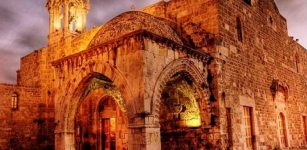 Ancient Byblos: Powerful Phoenician City With Own Kings
Civilizations | Apr 23, 2016
Ancient Byblos: Powerful Phoenician City With Own Kings
Civilizations | Apr 23, 2016 -
 On This Day In History: Sir Thomas Brisbane, Astronomer, Soldier And Governor Was Born – On July 23, 1773
News | Jul 23, 2016
On This Day In History: Sir Thomas Brisbane, Astronomer, Soldier And Governor Was Born – On July 23, 1773
News | Jul 23, 2016 -
 What Is The Meaning Of Ankh – Ancient Egyptian Symbol
Ancient Symbols | Sep 21, 2023
What Is The Meaning Of Ankh – Ancient Egyptian Symbol
Ancient Symbols | Sep 21, 2023 -
 Mysterious Fossilized Antarctic Forest May Offer Evidence Of The Great Flood – But Some Facts Speak Against This Theory
Archaeology | Dec 27, 2017
Mysterious Fossilized Antarctic Forest May Offer Evidence Of The Great Flood – But Some Facts Speak Against This Theory
Archaeology | Dec 27, 2017 -
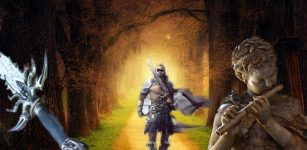 Different Story Of Odin’s Sons Balder And Hoder In Norse Mythology
Featured Stories | Nov 26, 2020
Different Story Of Odin’s Sons Balder And Hoder In Norse Mythology
Featured Stories | Nov 26, 2020 -
 Was Spruce Hill In Ohio Home To An Ancient Lost Civilization? Traces Of Strong Fire Puzzle Scientists
Featured Stories | Jan 17, 2018
Was Spruce Hill In Ohio Home To An Ancient Lost Civilization? Traces Of Strong Fire Puzzle Scientists
Featured Stories | Jan 17, 2018 -
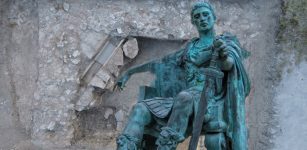 Major Discovery Of Ancient Roman Temple – Largest Evidence Ever Of The Imperial Cult
Archaeology | Jan 5, 2024
Major Discovery Of Ancient Roman Temple – Largest Evidence Ever Of The Imperial Cult
Archaeology | Jan 5, 2024

